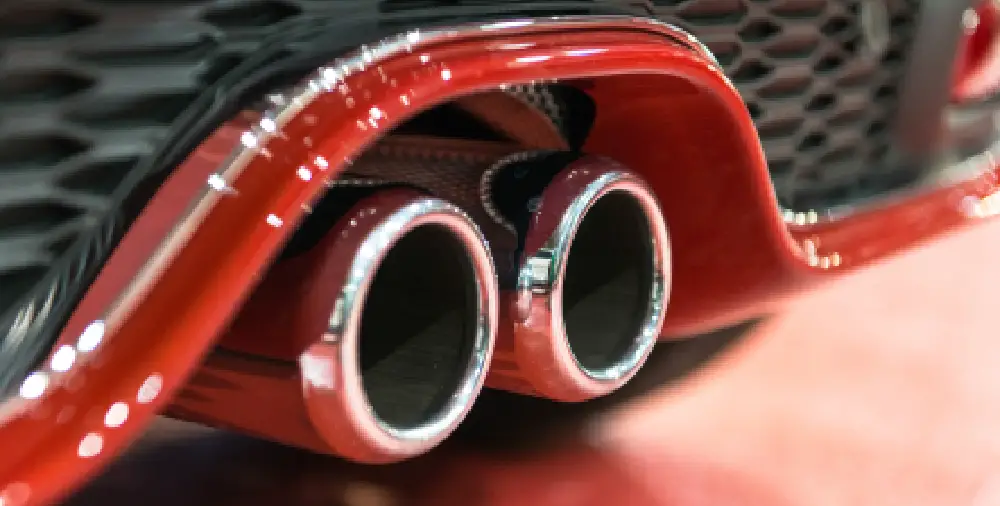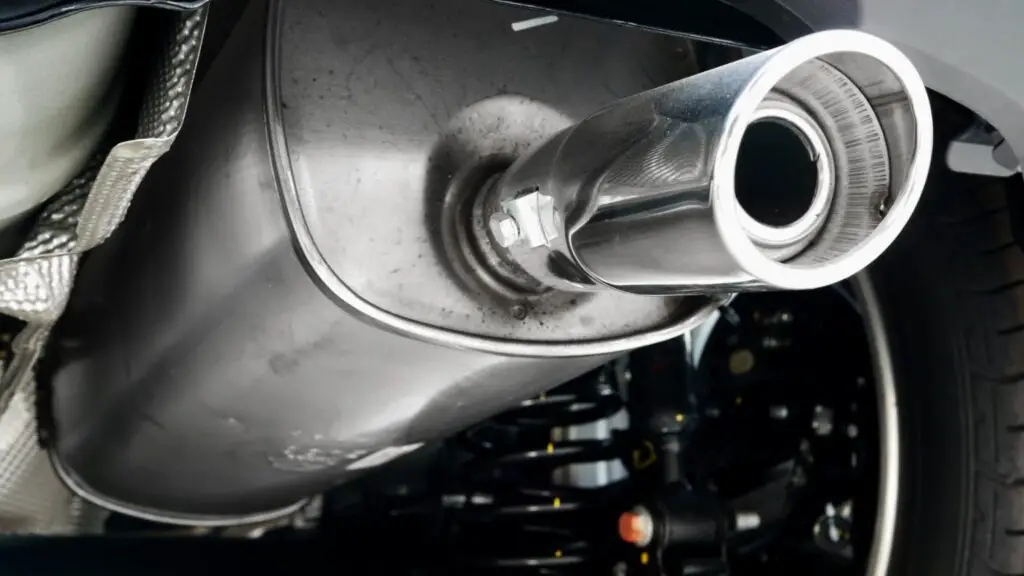Do exhaust tips change sound? Yes, exhaust tips can slightly alter the sound of your vehicle. While they don’t drastically change the exhaust note, factors like diameter, shape, and material can make the sound deeper, sharper, or more refined depending on the design.
When it comes to modifying your car’s exhaust system, one of the most common questions that arises is, “Do exhaust tips change sound?” While exhaust tips are often seen as a purely cosmetic upgrade, they can indeed influence the sound of your vehicle, although not in a dramatic way. The shape, size, and material of the exhaust tip play a role in the way exhaust gases exit your vehicle and, in turn, impact the sound.
In this article, we will dive deep into how exhaust tips affect sound and answer some common questions on this topic.

Contents
Role of Exhaust Tips
Exhaust tips are the visible end components of your car’s exhaust system. While their primary function is to guide exhaust gases safely out of the vehicle, they also play a minor role in altering the acoustics of the exhaust system. Exhaust tips come in various shapes, sizes, and materials, each of which can affect the sound, but they don’t drastically change the tone as compared to other parts of the exhaust system, like the muffler or headers.
However, the difference they make is not negligible, especially for car enthusiasts looking to add a personalized sound to their vehicle.
How Do Exhaust Tips Affect the Sound?
The sound produced by your vehicle’s exhaust system depends on a variety of factors, including the design of the exhaust tip. The exhaust system itself, including the muffler, catalytic converters, and the headers, is the primary driver of sound production, but exhaust tips can fine-tune that sound, making it louder, deeper, or even softer.
Here are the key factors that influence how exhaust tips can change the sound:
1. Exhaust Tip Diameter
The diameter of the exhaust tip can have a subtle effect on the tone and volume of your exhaust.
- Larger Diameter Tips: When you increase the size of the exhaust tip, the exhaust gases have more room to exit. This can create a deeper and slightly louder sound as the gases are released more freely. The increased airflow allows the exhaust gases to travel faster and can generate a more aggressive or growling tone.
- Smaller Diameter Tips: On the other hand, smaller tips create more restriction, which can result in a higher-pitched sound. This is more noticeable in performance cars or sports vehicles that have smaller exhaust systems.
While these changes in sound may be subtle, enthusiasts often use larger tips to achieve a sportier sound or more aggressive tone for their vehicles.
2. Shape of the Exhaust Tip
The shape of the exhaust tip also plays a role in shaping the sound produced by your vehicle. Exhaust tips come in several different shapes, and each affects how the sound waves are directed:
- Rolled-Edge Tips: These tips are slightly bent or rounded at the edge. They tend to produce a smoother sound and are often preferred for creating a refined exhaust tone.
- Slant-Cut Tips: A slant-cut exhaust tip directs the exhaust gases at an angle. This can slightly alter the sound by making it sharper and more direct. Slant-cut tips are often associated with a more aggressive exhaust tone.
- Turn-Down Tips: These tips point downward, which can reduce the amount of sound that escapes directly out the back of the vehicle. This results in a quieter exhaust tone for the cabin, as the sound is directed downward and away from the rear of the vehicle.
- Dual-Walled Tips: Dual-walled tips, or double-walled exhaust tips, consist of two layers of material. The added layer can slightly dampen the sound, giving a smoother and quieter tone. It’s ideal for those who want to reduce the harshness of their exhaust note without sacrificing the overall volume.
3. Material of the Exhaust Tip
The material used to construct the exhaust tip can also affect the tone of the exhaust. The rigidity and weight of the material can influence the overall sound.
- Stainless Steel: Stainless steel is the most common material used for exhaust tips. It is durable and resistant to rust, but it also tends to amplify the sound slightly, giving a crisper and louder tone.
- Chrome: Chrome tips have a shiny, mirror-like finish, and while they do not drastically affect sound compared to stainless steel, they can still slightly influence the tone due to their reflective properties.
- Titanium: Titanium exhaust tips are lighter than stainless steel and can produce a sharper, more aggressive tone. However, they tend to be more expensive, and their sound-enhancing properties are subtle at best.
4. Perforated and Resonated Tips
Some exhaust tips come with internal features such as perforations or resonators. These tips are specifically designed to alter the exhaust sound more noticeably.
- Perforated Tips: These tips have holes in the end, which allow for some sound to escape through the perforations. This feature helps in reducing the harshness of the exhaust note, making the tone softer and smoother.
- Resonated Tips: Resonated exhaust tips contain an internal baffle that acts as a sound modifier. The resonator helps to change the frequency of the exhaust note, softening high-pitched sounds and sometimes making the exhaust tone more refined and balanced.
5. Exhaust Tip Length
The length of the exhaust tip can also impact the exhaust sound. Longer tips tend to slightly reduce the volume inside the cabin by allowing sound waves to dissipate more before they enter the cabin. Shorter tips, conversely, often produce louder, more aggressive sounds because the exhaust gases exit more abruptly.

Limitations of Exhaust Tips
While exhaust tips can certainly have an effect on the sound, it’s important to note that they won’t radically change your vehicle’s exhaust note. They are more of a fine-tuning tool than a complete overhaul. The real sound transformation comes from altering components like the muffler, catalytic converter, and headers. Exhaust tips are mostly used for cosmetic purposes and to achieve small changes in tone.
Additionally, exhaust tips can’t solve issues like drone (an annoying resonating sound) or muffler vibration, which are typically addressed by more significant modifications to the exhaust system.
Visual Examples of Exhaust Tips and Their Effects on Sound
Here are some visual examples of different exhaust tip designs and how they affect the sound:
- Single-Wall Exhaust Tip: This is a basic exhaust tip without additional layers, often resulting in a louder, sharper sound.
- dual-wall exhaust tip: A dual-wall exhaust tip that provides a refined and slightly quieter sound due to the extra layer.
- Slant-Cut Exhaust Tip: A slant-cut tip produces a more aggressive sound due to the angled exit of exhaust gases.
- Rolled-Edge Exhaust Tip: This tip results in a smoother, more refined exhaust tone.
- Perforated Exhaust Tip: Perforated tips can reduce the sharpness of exhaust sound by diffusing sound waves.
- Turn-Down Exhaust Tip: A turn-down tip directs the sound downward, making it quieter from inside the vehicle.
Frequently Asked Questions
Here are some FAQs about exhaust tips change sound –
1. Do exhaust tips significantly change the sound of my vehicle?
Exhaust tips can influence the sound, but the change is usually subtle. The overall tone and volume are mostly determined by the muffler and other exhaust components.
2. Does the size of the exhaust tip affect the sound?
Yes, a larger diameter exhaust tip tends to create a deeper and more aggressive sound, while a smaller tip results in a higher-pitched tone.
3. Are slant-cut tips louder than straight exhaust tips?
Yes, slant-cut tips often produce a louder and more aggressive sound as the exhaust gases are directed at an angle.
4. How do dual-wall exhaust tips affect the sound?
Dual-wall tips offer a smoother, less harsh sound compared to single-wall tips, as they tend to diffuse the exhaust sound.
5. Can I expect a huge difference in sound just by changing the exhaust tip?
Exhaust tips will not drastically change the sound of your vehicle, but they can subtly alter the tone and volume, depending on the design.
Conclusion
In conclusion, exhaust tips can change the sound of your vehicle, but their effects are generally minor compared to other exhaust modifications. They primarily serve as a way to fine-tune the exhaust tone and can make small changes in volume and pitch.
However, for a more noticeable alteration of the exhaust note, modifications to the muffler, catalytic converter, or headers are necessary. When choosing exhaust tips, consider the shape, size, material, and internal features to achieve the desired sound and aesthetic for your vehicle.